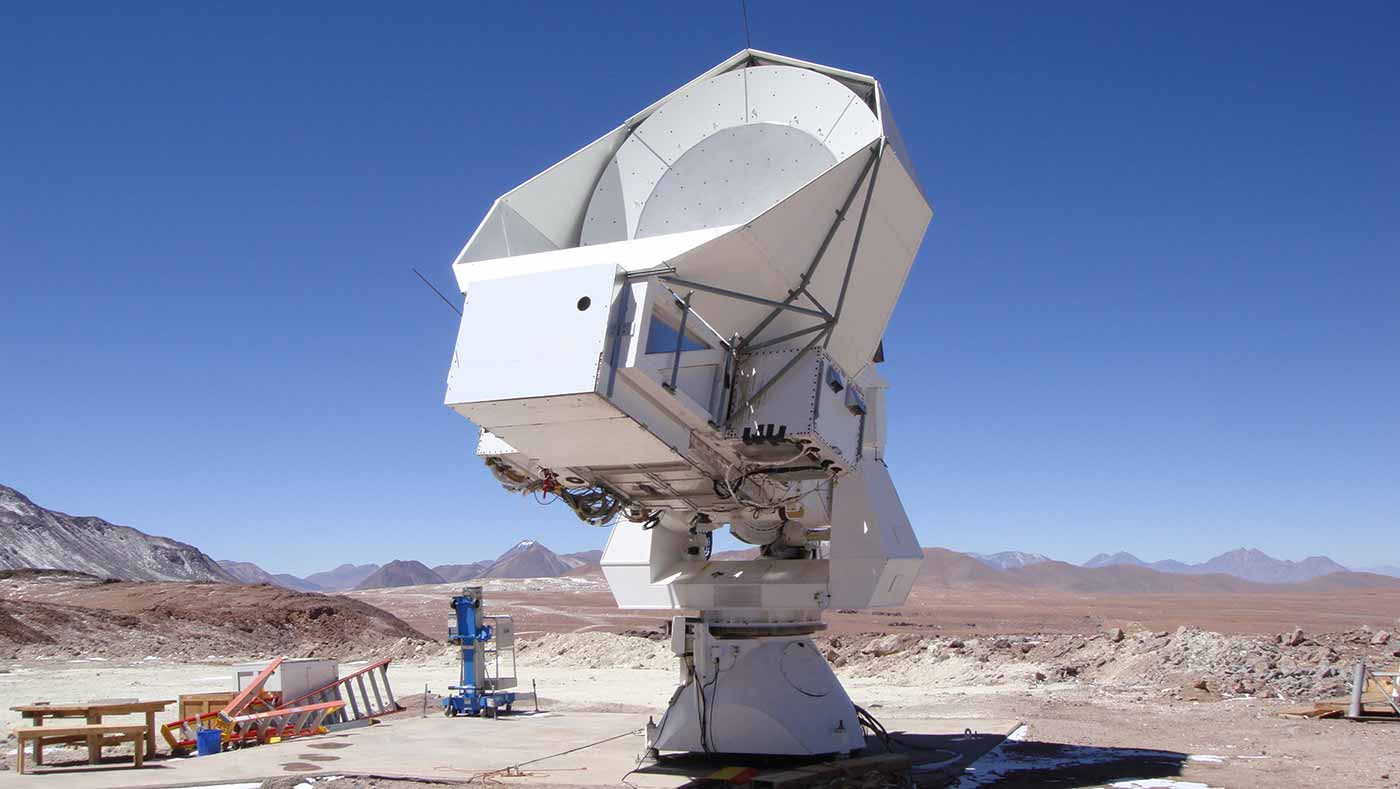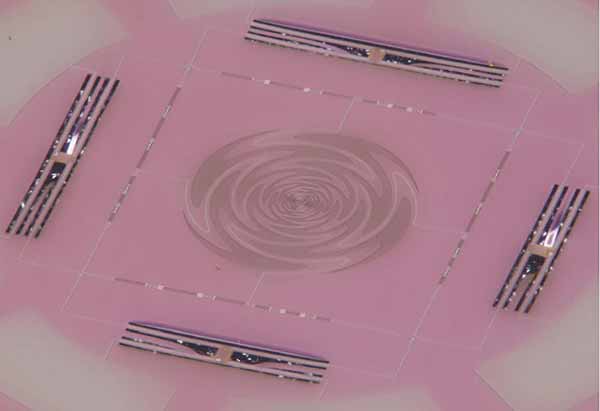
NSF Awards Simons Array Project $5 Million to Study Origins of the Universe
Led by a team of scientists from UC San Diego, UC Berkeley and the University of Colorado, the Simons Array studies the early universe after the Big Bang
Published Date
By:
- Kristin Luciani
Share This:
Article Content

The Simons Array, a system of three powerful telescopes located in Chile's Atacama desert, will give astronomers an important new tool to peer back in time to the early universe.
The National Science Foundation (NSF) has awarded a $5 million grant to support the Simons Array, a new system of three powerful telescopes designed to study the origins of the universe. Led by a team of scientists from UC San Diego, UC Berkeley and the University of Colorado, the Simons Array expands the POLARBEAR project, based in Chile’s Atacama desert, to search for the signature of cosmic inflation—the rapid expansion of the early universe after the Big Bang. The project is one of just four cosmology proposals—out of more than 40 applicants in 2014—to be funded by the NSF.
The new system is named for James and Marilyn Simons of the Simons Foundation, which provided the initial funding to build and install two telescopes to pair with the original POLARBEAR telescope. The three together make up the Simons Array. The NSF grant will support a team of scientists for three years of observations and data analysis. This includes graduate student stipends, undergraduate research scholarships, travel and other operational expenses.
“People are the heart of any good experiment. We would not be able to design, fabricate, test and deploy the hardware of the Simons Array—not to mention travel to Chile to observe the distant universe—without the NSF funding,” said Brian Keating, professor of physics at UC San Diego. Keating is leading the project with Adrian Lee, a UC Berkeley professor of physics.

The Simons Array is equipped with novel multifrequency detectors that will allow scientists to extract the faintest cosmological signal.
“This project, which will give astronomers an important new tool to peer back in time to our early universe, will enhance UC San Diego’s reputation as a world leader in the field of astrophysics,” said Mark Thiemens, dean of the Division of Physical Sciences, which hired three renowned astrophysicists to UC San Diego’s Center for Astrophysics and Space Sciences in just the last year. “Our group of astrophysicists is world renowned for its research from the origin of the elements, stars and galaxy all the way to the beginning of the universe.”
Stationed at the University of California’s James Ax Observatory in Chile, the Simons Array will create high-fidelity maps of polarization in the cosmic microwave background (CMB), which scientists will then analyze for evidence of inflation after the Big Bang. The CMB is essentially remnant radiation from the Big Bang, which has cooled and stretched with the expansion of the universe to microwave lengths. The CMB acts as an enormous backlight, illuminating the large-scale structure of the universe and carrying an imprint of cosmic history.
One of the challenges of mapping the CMB is the interference of dust in the galaxy, which emits polarized radiation similar to the CMB. The Simons Array is designed specifically to extract the faintest cosmological signal “hiding” underneath the dust emission by separating the two signals by their spectral signature. Each of the three high-resolution telescopes will be outfitted with cameras that can sense up to seven microwave wavelengths, or “colors,” simultaneously. The resulting combination of unprecedented sensitivity and spectral information will make it possible to separate the inflationary signal from any contamination by galactic signals, such as dust.
“The Simons Array represents the boldest, most ambitious and most sensitive instrument ever designed to fully ‘mine’ the cosmic microwave background of its secrets,” said Keating. “With the Simons Array, we have a chance to glimpse the universe in its infancy.”
In addition to studying the early universe, the Simons Array will be the first to measure the masses of neutrinos, the only form of dark matter known to exist. These “ghostly” particles elude capture, making them difficult to study.
The first new telescope of the Simons Array will be deployed late in 2015, and Keating and his team hope to get what astronomers call “first light” in early to mid-2016. Additional funding is still needed to support the operation of the project, including support for student researchers—the next generation of scientists who will explore fundamental questions of the universe. To make a gift in support of the Simons Array project, contact Melanie Cruz, executive director of development, at (858) 822-3258 or mbcruz@ucsd.edu.
Share This:
You May Also Like
Stay in the Know
Keep up with all the latest from UC San Diego. Subscribe to the newsletter today.


